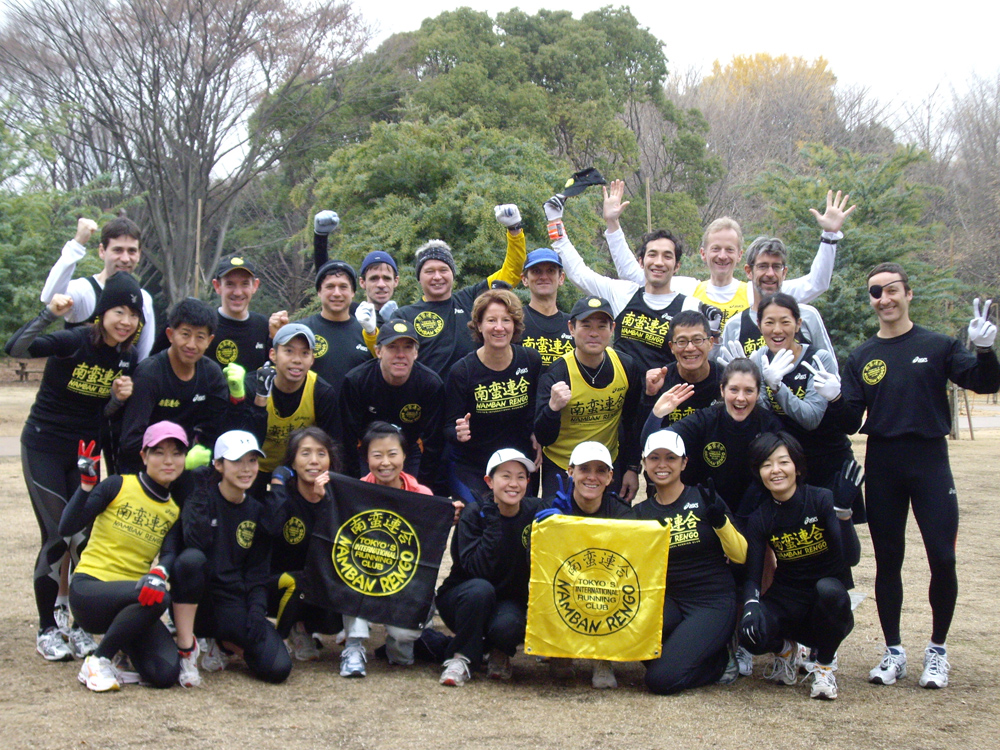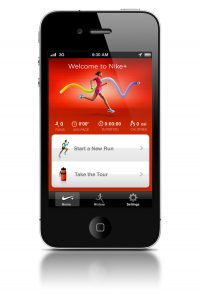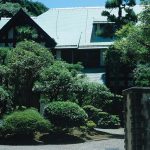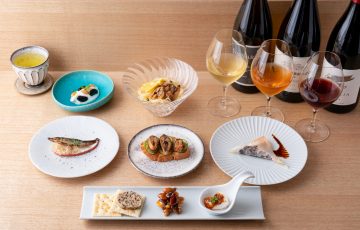Japan’s capital reinvigorates an old pastime with new technologies
As I run I tell myself to think of a river. And clouds. But essentially I’m not thinking of anything. All I do is keep on running in my own cozy, homemade void, my own nostalgic silence. And this is a pretty wonderful thing. No matter what anybody says. – Haruki Murakami, “What I Talk About When I Talk About Running”
Every morning before rush hour – and weekday evenings just before dusk – the path around Tokyo’s Imperial Palace bulges with runners.
Some are plugged into headphones, others chit chat with a partner. Some move at barely more than a walk whereas others zoom past, seeming to create their own wind. On weekends, thousands of runners come together to form a bobbing, sweating mass of humanity: a sort of living monument to the Japanese concept of gaman (endurance).
“We’re in the middle of a real running boom,” says Bob Poulson, leader and founder of Tokyo’s popular running club, Namban Rengo. Over the past 3 years – “It all started with the Tokyo Marathon in 2007,” he notes – what used to be a sport for the disciplined few, has seen a surge of interest from new devotees.

For the 2010 Tokyo Marathon, over 272,000 hopefuls entered a lottery for 32,000 slots. Forty percent of them were first-time marathoners. Next year promises to be even bigger. In the first 24 hours of availability, more than 32,000 people applied, according to the Daily Yomiuri.
“For the New York Marathon, you might get 100,000, maybe 150,000 entrants,” says Poulson. “But nowhere else in the world do a quarter of a million people apply for a marathon.”
The craze has even spawned business opportunities. Those paths around the Palace have become so popular that in the last few years new service areas have popped up offering showers and refreshments to the sweaty, thirsty, masses.
When it comes to exercise trends, running seems like the anti-fad. It is, after all, arguably the simplest form of exercise, requiring no special equipment, no prescribed uniform, and no fealty pledge to the guru of the moment. Fitness fads also come and go within a season or two, whereas the running trend seems to just keep building every year. This may be thanks to the fact that in Japan, (in true Japanese style) this classic form of fitness comes with a few modern twists.
In contrast to the solitary-jogger stereotype, the new wave of runners is more extroverted, more social. Runners come to clubs like Poulson’s Namban Rengo not only to get fit, but also to share their passion with others. The idea seems a natural fit in Japan, where there is a national obsession with road relay races like the popular Hakone Ekiden, events where running is viewed as a celebration of teamwork as much as individual achievement.
“People have gotten jobs through the running club, made connections. A lot of girls have met their husbands or boyfriends.” Says 24-year-old, three-time marathon runner Megumi Hirasawa, who speaks from experience. She met her husband, David, on Oda Field near Yoyogi Park as part of Namban Rengo. “He says he noticed me when I ran ahead of him.”
When the couple married in Hakone last year, it was at the end of a hilly 21 km run around Lake Ashino. The pair started off in opposite directions, then met on the other side of the lake where, without breaking for a shower or a change, they exchanged vows like, “I promise to never miss your race,” and, “I promise to support you when you want to go running.” More than 30 friends from the running club looked on.
In addition to being community-minded, the new style of runner is also literally plugged in. By integrating technology into their workouts, runners are enjoying more personal freedom as well as the ability connect and share hard-won accomplishments with others.
Google Maps makes navigating Tokyo’s sometimes confusing layout easier then ever before. Websites like mapmyrun.com also allow visitors to browse a selection of other users’ past “favorite routes,” or to submit one of their own.
 Lightweight, portable Global Positioning Systems (GPS) also give runners the ability to decide where they’re headed while on the go, meaning long runs can be spontaneous adventures, free from the tyranny of rigid, pre-researched routes. GPS watches from companies like Garmin not only tell runners where they are, they can also measure heart rate, estimate calories burned, distance covered, and average pace. Some models also have wireless technology, so you can beam your latest stats to your computer.
Lightweight, portable Global Positioning Systems (GPS) also give runners the ability to decide where they’re headed while on the go, meaning long runs can be spontaneous adventures, free from the tyranny of rigid, pre-researched routes. GPS watches from companies like Garmin not only tell runners where they are, they can also measure heart rate, estimate calories burned, distance covered, and average pace. Some models also have wireless technology, so you can beam your latest stats to your computer.
Recently, Nike paired up with Apple to make Nike+, a sensor that runners place in their shoes. Nike+ allows users to chart runs, set goals that can be uploaded to Nikeplus.com and – when combined with iPod – even access a pre-selected “power song” for times when energy is in short supply. Users can also post their triumphs – or new challenges – to sites like Twitter and Facebook.
For the rainy season, or days when the heat becomes unbearable, there’s even a program called Tokyo-Jogging that, through a mash-up of Nintendo Wii and Google maps, allows users to roam the streets of Tokyo, virtually. (Never has the Shibuya crossing felt so stress-free.)
“I don’t think I could run without the technology,” says Joseph Tame, a British native who started running as a way to explore the corners of Tokyo he’d never seen from the train.
Tame knows the intersection between fitness and technology as well as anyone. Earlier this year he pushed the limits of both by live-streaming a full marathon run using video service Ustream.
“The main point was to share the experience, not just from a runner’s perspective, to actually involving the audience.” He says of the plan.
Tame set off on the rainy February morning of the 2010 Marathon armed with three iPhones. One served as a camera. Tame attached it to his head via a makeshift hat he’d constructed with bits and pieces he found at Tokyu Hands. (“Everyone was looking at me like I was crazy,” he remembers of that particular shopping expedition.)
The second iPhone in his pocket was for GPS. The third was for reading tweets, receiving emails, and taking calls from reporters from FUJI TV who had gotten word of his experiment.
“Within the first few kms, the hat fell apart.” Tame remembers, with something between a wince and a smile. Not wanting to give up on the idea of having a live, literal running commentary, Tame kept plodding on, now holding the phone out in front of him.
“I found focusing on the technology allowed me to run stronger, a little bit faster,” he says, admitting, “running 42 km with your arm outstretched holding a phone sounds crazy, but it wasn’t. When you’re really passionate about something, you don’t notice the pain so much. Until you reach about 30 km, and then you want to die. “
That was when getting encouraging messages via microblogging service, Twitter, kept him going. The 140-character bursts of encouragement came in English at first.
“I had found an application that would read (incoming) tweets to me. But then it started going quiet. I thought it was broken, but then I realized it couldn’t read Japanese.” When Tame realized that messages were pouring in from Japanese as well as English speakers, he switched his commentary to Japanese and his audience grew even bigger.
“When I reached about 30km I heard these voices saying, “Joseph-san, ganbatte!’” he remembers. “I was so tired at that point. I was shocked. I wondered if I had stumbled into some parallel universe.”
Calling out Joseph’s name, however, was a very real family from this universe – a husband, wife, and child. He’d never met them before but there they were on the sideline, holding an encouraging sign and offering him curry bread.
“I later on discovered that they lived near the course and had wanted to support someone, but didn’t know anyone running,” Tame remembers. “Through Twitter they saw my story and decided to support me.” As Joseph ran by, live-streaming, the family live-streamed him right back. They had come to the course not only with encouraging words, but also equipped with a laptop and pocket Wi-Fi.
By the end of the race, Tame was receiving 1,000 Tweets an hour. One of them read, “Everyone was watching Joseph’s Ustream, remember, it’s a triumph of humanity not of technology.” It was, in the end, a win for both. What started with 70 viewers had grown to 13,000 by the time Tame crossed the finish line.
“I know someone who started crying when I crossed the line. They could feel the challenge. It wasn’t just about me,” he says, adding: “Twenty-nine thousand other people did something just as tough that day. They just didn’t happen to have an iPhone.”
Top Places To Run In And Around Tokyo:
The Imperial Palace
This central spot is popular for a reason. The palace offers a 5.3km loop, with no (autmobile) traffic to contend with. As the path is mostly flat, it’s a good fit for runners of all levels.
Yoyogi Park
Runners in search of a little visual stimulation – think a spillover of maids and aspiring idols from Harujuku – can enjoy the nearly 3km loop around Yoyogi Park. Between Tuesday and Thursday nearby Oda Field is also open to the public. Bob Poulson’s Namban Rengo trains there on Wednesday nights.
Tama River
Easily accessible from central Tokyo, this long stretch by the Tama River can take you as far as you’d like to go. There are wide bike paths, and stations along the river offer coin locker service.
Komazawa Park
Originally built for the 1964 Olympics, runners can enjoy a 2.146 km loops in the shade of the park’s trees.
Akasaka Palace
Centrally located Akasaka Palace has a 3.5km path with two large hills for runners looking for a challenge. Architecture enthusiasts can enjoy a view of the palace itself, the only Western building in Japan built in the Baroque Revival style.

Story by Paige Ferrari
From J SELECT Magazine, November 2010















Recent Comments